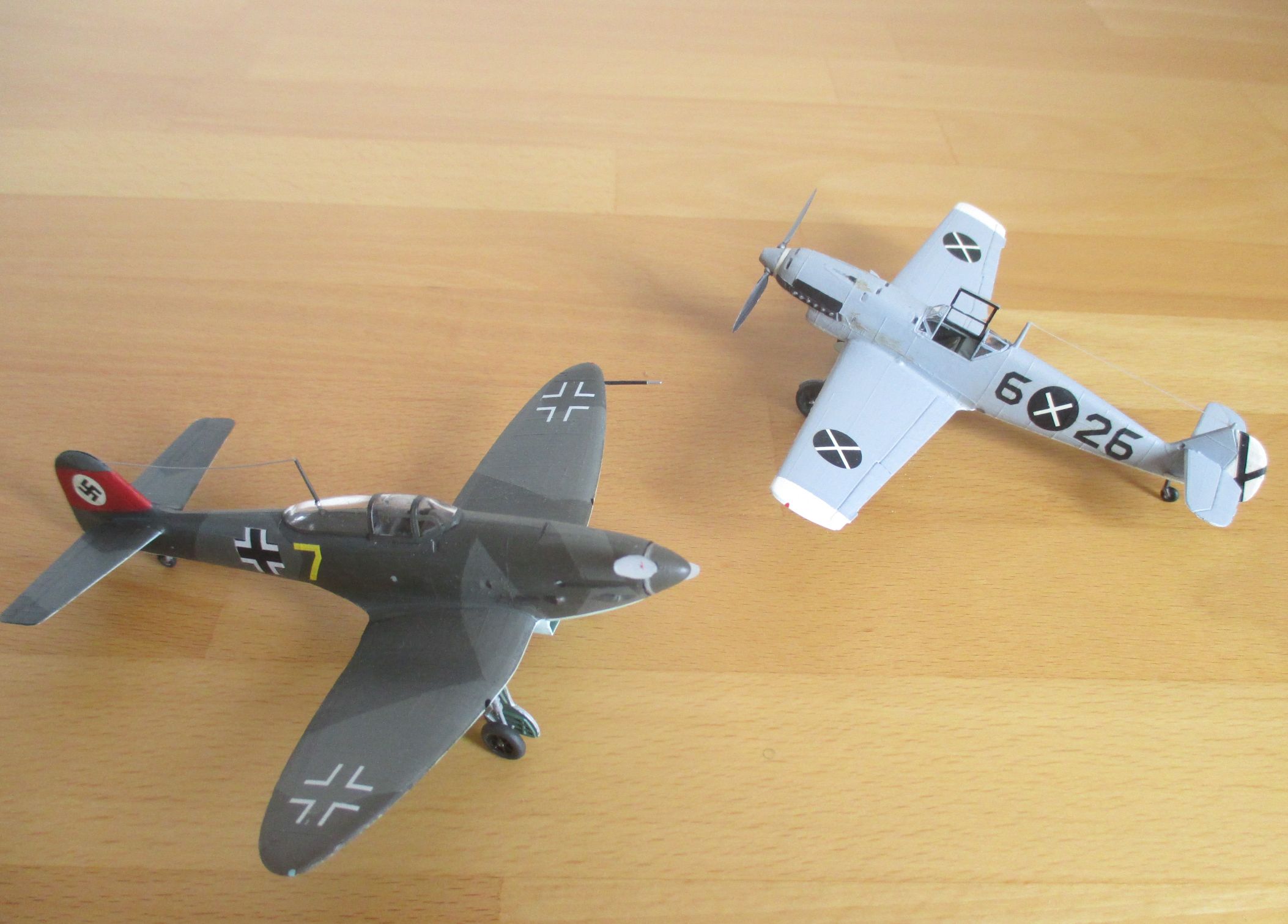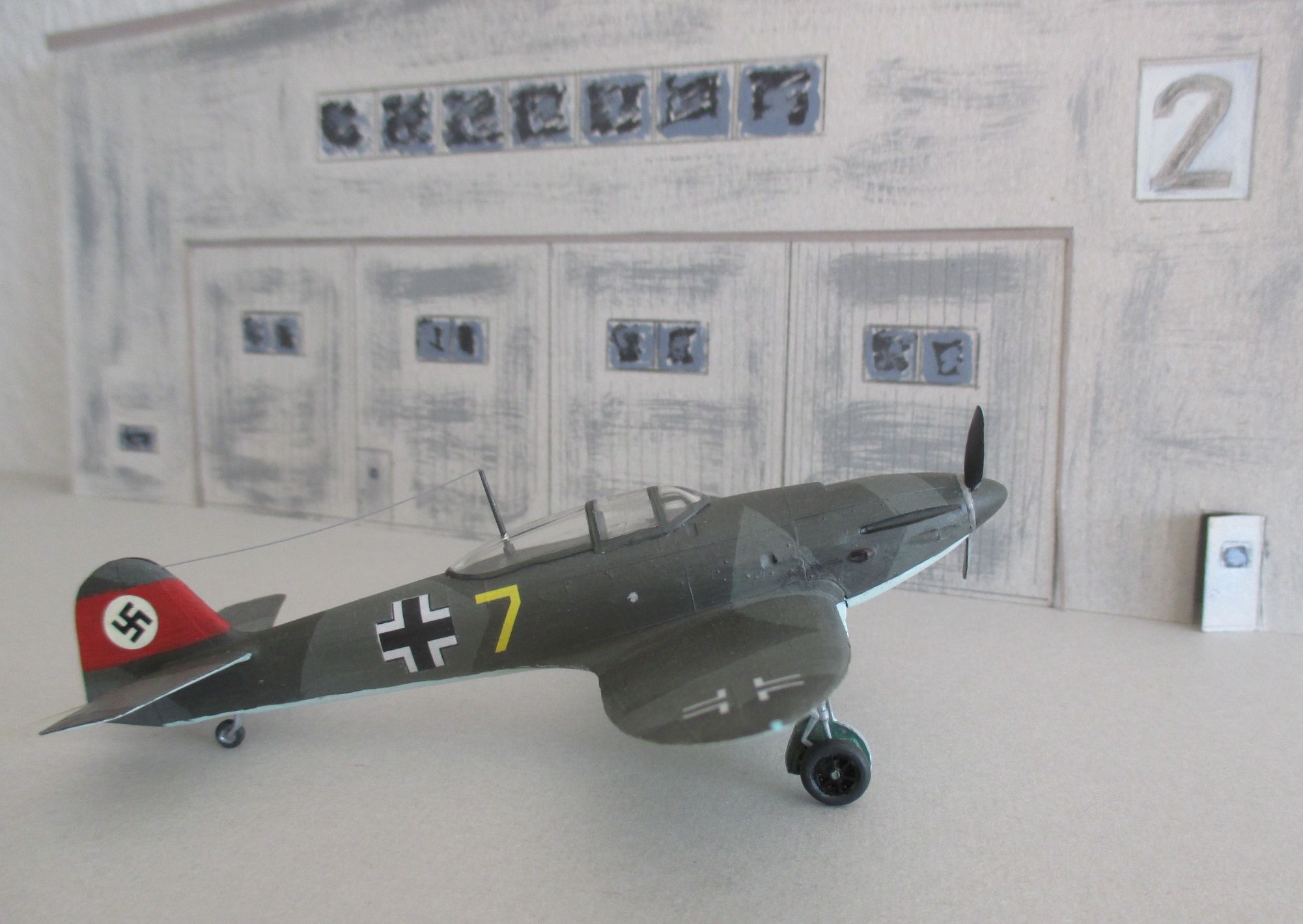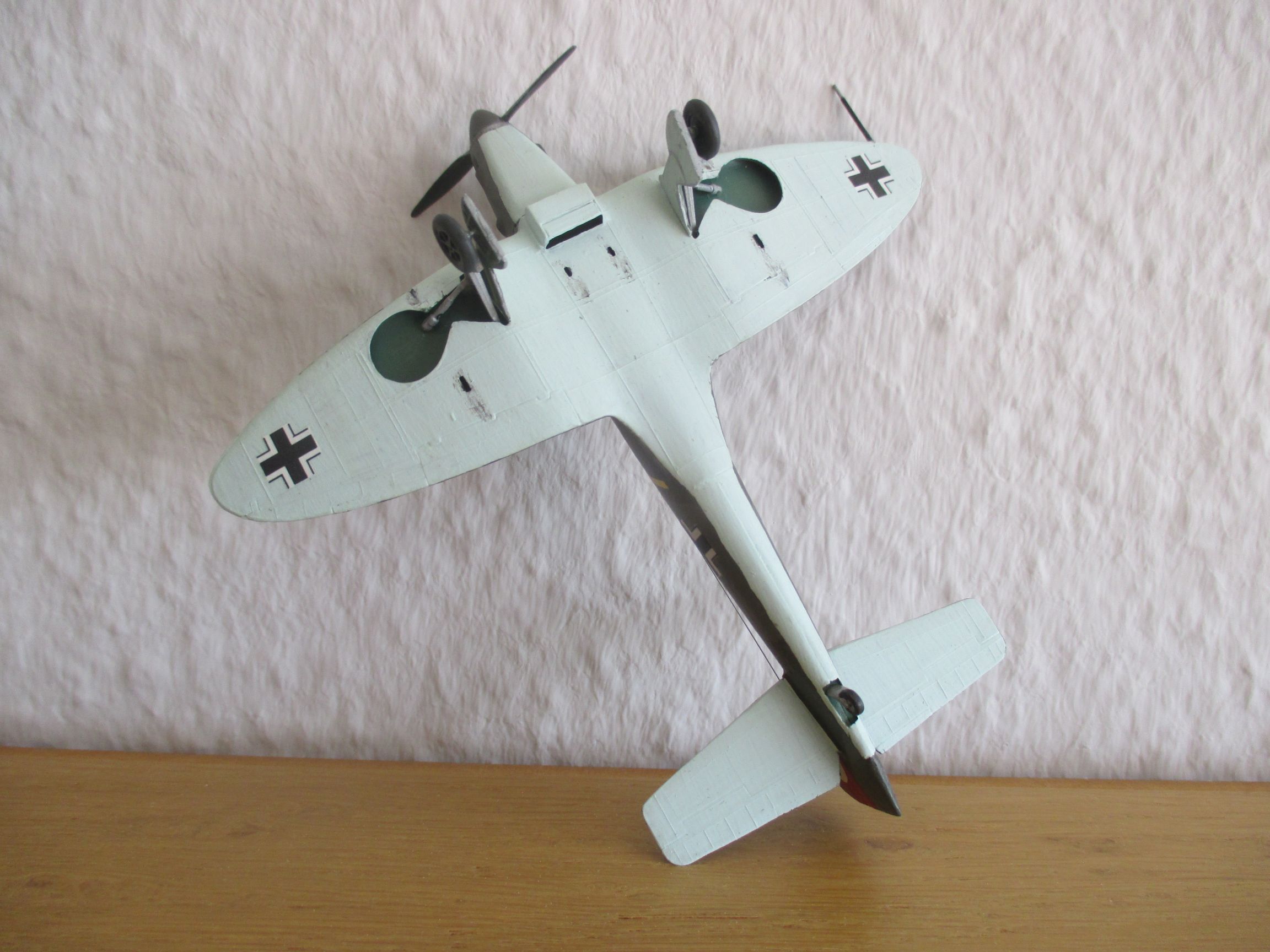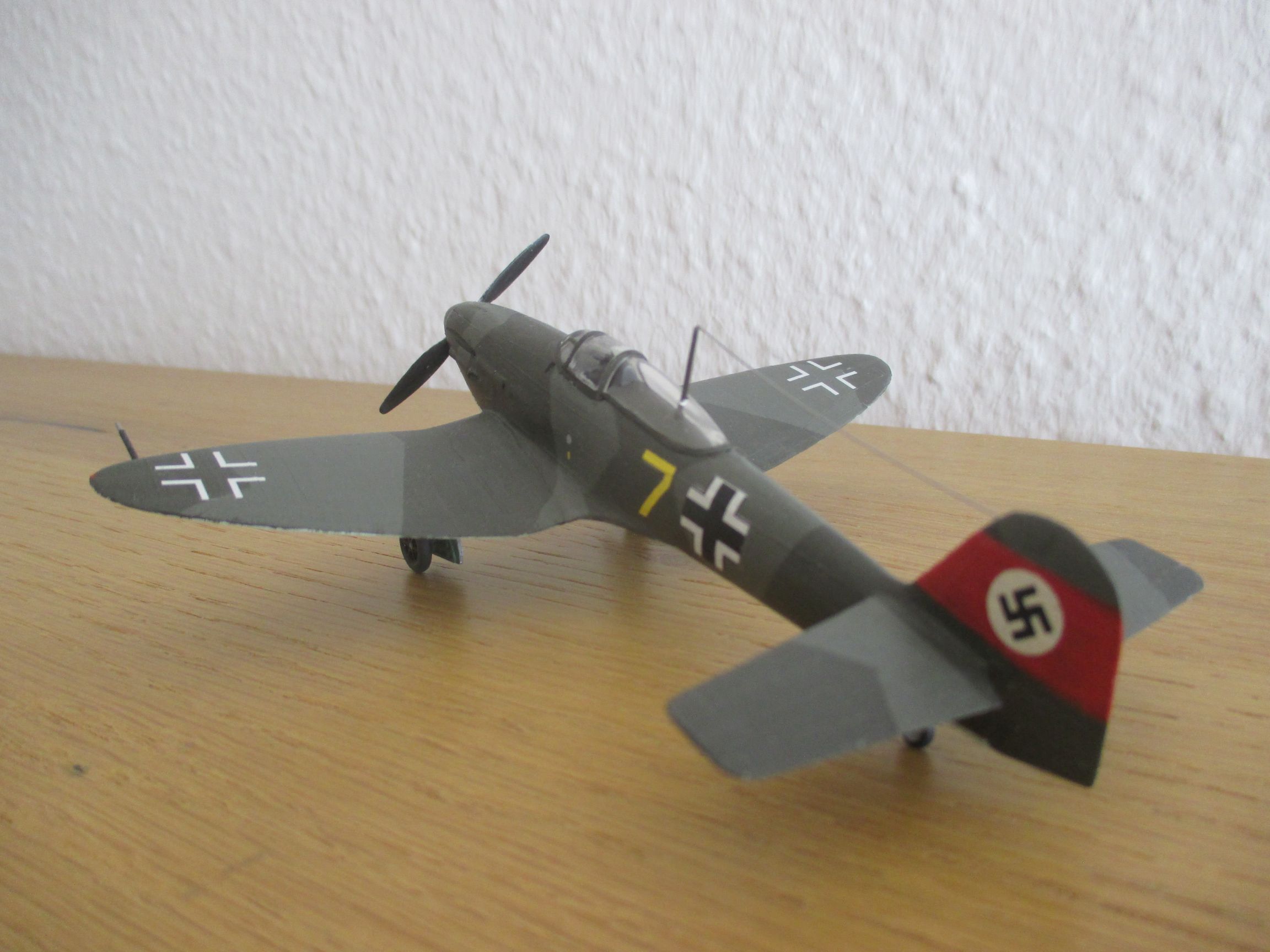From original to model
The more than 1,000 scale models, primarily of the international standards 1/72, 1/48 and 1/32, form an independent part of the collections of the Hanover-Laatzen Aviation Museum.
Such true-to-original miniatures allow viewers of museum technology history to gain an "overview", not only of the individual exhibit (sometimes even as the only possibility of a real three-dimensional display if there is no surviving original), but also of lines of development in aircraft construction by means of possible sequencing and juxtaposition. Sometimes they even close gaps in the presentation of the originals. The quality of their craftsmanship alone is a pleasure to behold.
Today, in our 'Model of the Month' series, we present a beautiful kit of a rare aeroplane: The Heinkel He 112 B0/ B1 from Heller. The traditional French company, which has just been revitalised (we recently saw good old kits re-edited in our trusted hobby shop), released this kit at the end of the 1970s - a remarkable and thankful tendency towards originality and a niche in its portfolio. After all, there were only 83 preproduction types and their operational history was rather limited.
The model: craftsmanship
Finely detailed and accurately fitting, pleasant to build, beautiful to look at - and two interesting versions to choose from... craftsmanship from France's capital. We were impressed by this quality when we were young and still are today. Our aviation museum displays a He 112 of the Condor Legion, a Romanian aircraft and one of the German Luftwaffe in its 1/72 scale model showcases.
The original: undervalued
The single-seat, single-engine Type 112 designed by Ernst Heinkel Flugzeugwerke under the direction of its Technical Director Heinrich Hertel came second only to the Messerschmitt Bf 109 in the selection process for the German Luftwaffe's new standard fighter in 1937.
Bad, very bad for Heinkel. The Reich Aviation Ministry had decided in advance on just one model, but the He 112 was so good that it was only given a minimal export corridor for reasons of national security: Dilemma; a lot of work and development cost at a dead end...

Expensive baby
The small and elegant all-metal low-wing monoplane with Junkers 12-cylinder Jumo 210 in-line engine and 360° full-view canopy showed its design origins in the wing structure: the fuselage shape, wing and retractable undercarriage were designed based on those components of the He 70; the fastest commercial aircraft in the world at the time, designed by the Günther twins in the Heinkel team, had visibly inspired this sleek fighter.
On a par with the 109 in terms of flight technology, more heavily armed and regarded by many pilots as the more elegant and aerodynamically more sophisticated aircraft, the Heinkel was more expensive to build in series than the lightweight Messerschmitt. This, coupled with an aircraft accident during testing and the mutual political antipathy between Ernst Heinkel and the National Socialists, meant that the He 112 was subsequently relegated to a shadowy existence.
Successfully deployed and operated in the Spanish Civil War, the Spanish acquired 19 examples, while Japan and Romania, as Germany's allies, each purchased 30 aircraft. Hungary was interested in licence production after purchasing three examples, but was once again vetoed by the RLM. Purchase negotiations with Switzerland and Yugoslavia also came to nothing. As a result, the model was an economic failure for Heinkel.

Footnotes
And while the unquestionably brilliant Messerschmitt Bf 109 became the most built and most successful piston engine fighter aircraft in the world in terms of aerial victories, the handful of He 112s used by the Romanian Air Force in the war against the Soviet Union proved the quality of this type, but this was only enough for a footnote in aviation history.
The type had previously only been used by the German Air Force for a very short time during the Sudeten crisis in 1938. During mobilisation, the He 112s intended for export were also withdrawn. Our model represents such an aircraft from Jagdgeschwader 132.

The lower view also reveals the design derivation from the He 70 'Blitz'.
Postscript: Incidentally, the British Spitfire also clearly showed a constructive perception of the deep and elliptical wing shape of the He 70 (in exchange for a Rolls Royce aircraft engine, the British had received an example and tested it extensively). If the He 112 had become the standard German fighter, there would certainly have been frequent confusion on both sides in the air war between Germany and the UK due to the similar wing silhouette...
Data sheet of the Heinkel He 112 B1
Crew: 1, length: 9.30 m, wingspan: 9.10 m, take-off weight: 2,250 kg, engine: 1 x Jumo 210 Ea with 680 hp, max. speed: 485 km/h, range: up to 1,000 km, armament: 2 x MG 17 7.9 mm, 2 x MG FF 20 mm

Come in!
Have we managed to arouse your curiosity? Then visit us at the Aviation Museum - over 40 sports, training, passenger and fighter aircraft, helicopters and gliders in the original and faithful replicas, a large engine and turbine section and over 1,000 scale models await you!
sb
Kontakt zum Autor der Modell-des-Monats-Reihe können Sie hier aufnehmen: Autor-MdM
